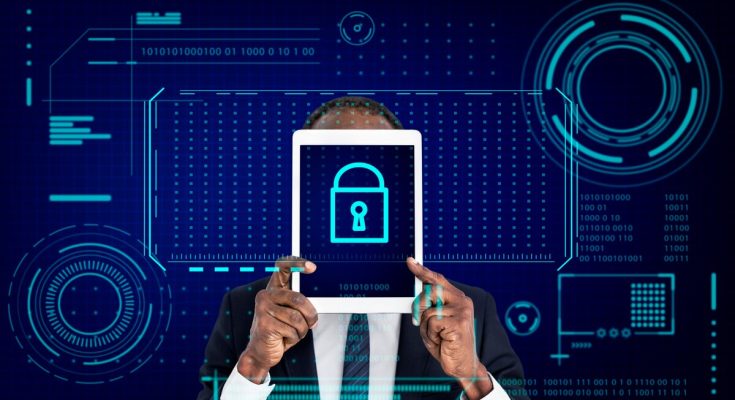Fintech and cybersecurity are more critical than ever in today’s linked world where financial transactions happen at the push of a button and data moves globally in milliseconds. Technology is revolutionizing the banking industry creating new prospects for innovation and ease.
However, protecting sensitive financial data from emerging cyber threats is even more difficult. This essay explores the challenges of securing financial transactions in the digital era and the techniques and technology that minimize risks and secure our financial institutions.
Enhanced Authentication Measures
Fintech cybersecurity relies on solid authentication procedures. Traditional authentication methods like passwords and PINs are subject to phishing and credential stuffing. Financial institutions and fintech startups are using sophisticated authentication to overcome these constraints.
Biometric authentication using fingerprints, face recognition or iris scans is more secure than passwords. Financial service providers may minimize account hacking by mandating biometric authentication which simplifies login and eliminates the need to memorize complicated passwords improving user experience.
Another growing identification approach is behavioral biometrics which examines use habits like typing speed and mouse movements. Behavioral biometrics provide real time identification of suspicious activity by authenticating users during the session. Proactive security improves fraud detection and cuts friction for genuine users.
Multi factor authentication MFA enhances security by demanding several verifications before accessing accounts. MFA usually involves a password, a mobile device for receiving verification codes and a fingerprint. MFA prevents unwanted access even if one authentication factor is compromised using several factors.
Encryption Technologies
Encryption is vital for securing data in transit and at rest in an age where fraudsters steal and abuse financial data. Data is illegible without the decryption key because encryption techniques jumble it. Organizations may protect sensitive data by encrypting financial transactions and communications.
Secure internet communication relies on TLS and SSL technologies to encrypt data between web servers and clients. These protocols protect financial transactions against eavesdropping and manipulation. E2EE protects data from sender to destination by encrypting the whole communication chain.
Mobile wallets payment gateways and peer to peer systems rely on encryption to secure digital payments. Tokenization protects payment data from unauthorized access by replacing credit card numbers with unique tokens. Devoid of value to attackers, tokenized data reduces fraud and unlawful transactions.
Quantum resistant encryption methods will change fintech cybersecurity as financial data volumes and complexity increase. By avoiding new risks and adopting encryption best practices financial institutions may build client trust and protect digital financial transactions.
Continuous Monitoring And Threat Intelligence
A solid defensive plan requires proactive monitoring and threat intelligence in the ever changing cybersecurity arena. Financial institutions must protect against malware phishing insider threats and advanced persistent threats. Continuous inspection of network traffic system logs and customer behavior lets firms notice and react to security problems in real time reducing breaches.
Financial organizations may combine and analyze massive volumes of security data from many sources using robust SIEM solutions to spot suspicious patterns and anomalies that may indicate a cyber assault. SIEM systems help security teams quickly analyze and mitigate risks by connecting security events and contextual information.
Using threat information feeds from industry consortia government agencies and cybersecurity vendors helps enterprises predict and combat new risks. Threat intelligence lets security analysts actively scan their networks for compromise rather than waiting for notifications. This proactive cybersecurity strategy decreases attackers’ stay time in the network and boosts cyber resilience.
Machine learning and AI may improve threat intelligence for enterprises. Advanced analytics help firms automate threat identification and response enhancing security analysts and speeding up incident response. Automation and AI driven threat intelligence may help financial institutions avoid cyberattacks and protect digital financial transactions.
Securing Cloud Infrastructure
Cloud computing has transformed financial institutions’ IT infrastructure management providing scalability flexibility and cost efficiency. Cloud migration presents additional security problems since sensitive financial data travels external networks and lives on shared infrastructure. Organizations must deploy cloud specific security measures to reduce cloud computing threats.
Implementing access restrictions and identity management rules is crucial to cloud infrastructure security. IAM solutions allow enterprises to set and enforce granular access rights to restrict sensitive resource access to authorized individuals and apps. Organizations may avoid data breaches and unauthorized access by employing least privilege principles and robust authentication.
Cloud encryption and data protection provide additional security for sensitive financial data. Cloud service providers’ inherent encryption mechanisms protect data at rest and in transit. Encryption key management and rotation rules improve data security by protecting and updating encryption keys to prevent key compromise.
Continuous cloud infrastructure monitoring and auditing are necessary to discover and resolve security problems. CSPM solutions audit cloud setups against security best practices and compliance requirements to find misconfigurations and vulnerabilities that might compromise sensitive data. Automated remediation reduces the window of vulnerability and improves cloud security.
Combating Insider Threats
While external cyber risks make news, insider dangers threaten financial transactions and sensitive data. Insider risks may come from hostile insiders, irresponsible staff who accidentally leak valuable data or external attackers who hack accounts. Organizations must use technology rules and staff education to address insider threats.
Robust user behavior analytics UBA solutions help companies identify insider threats. UBA systems analyze user activity access patterns and data interactions to detect abnormal behavior and flag security events for further investigation. Security teams may quickly minimize insider risks with real time notifications and automated responses.
DLP solutions assist firms in preventing insiders from stealing sensitive financial data. DLP systems enforce user roles permissions and data classifications to limit access to sensitive data inside the enterprise. DLP systems prevent insider data breaches by detecting and stopping illegal transfers or accesses to sensitive data.
Conclusion
Combining fintech and cybersecurity creates possibilities and difficulties for digital financial transaction security. Financial institutions may protect themselves against cyberattacks via enhanced authentication, encryption and monitoring.
A complete cybersecurity plan includes cloud infrastructure security, insider threat prevention and regulatory compliance. In an increasingly linked world proactive risk management and industry cooperation can build confidence, secure sensitive financial data and assure financial transaction integrity.
